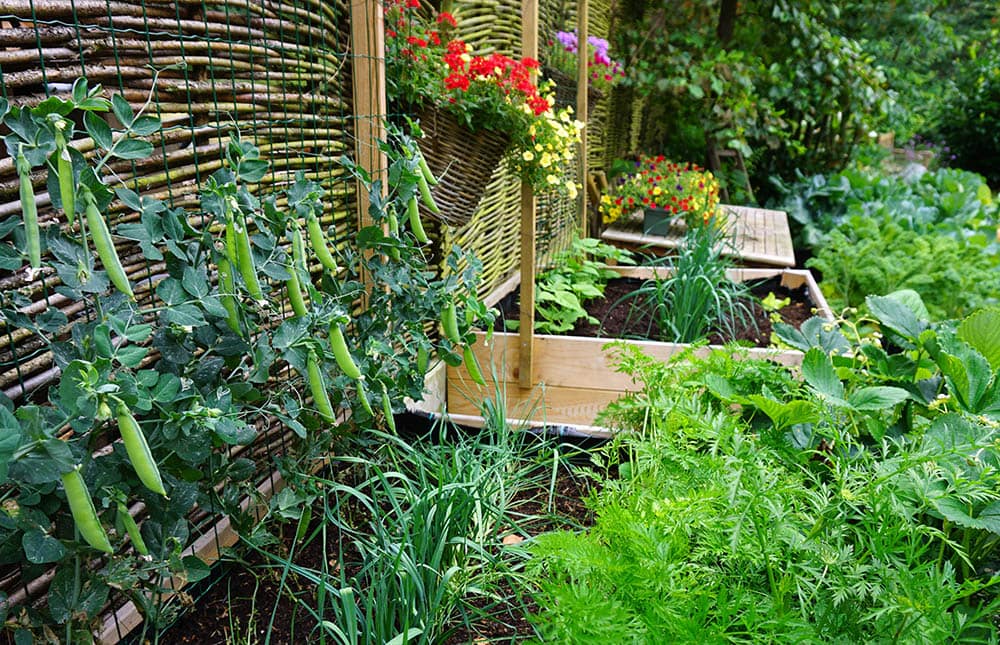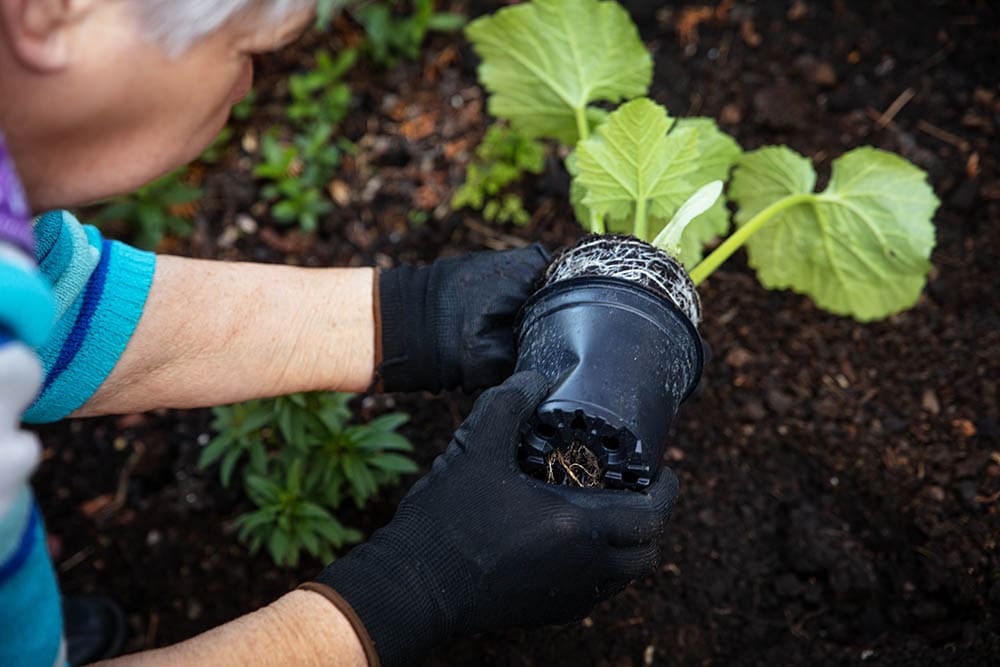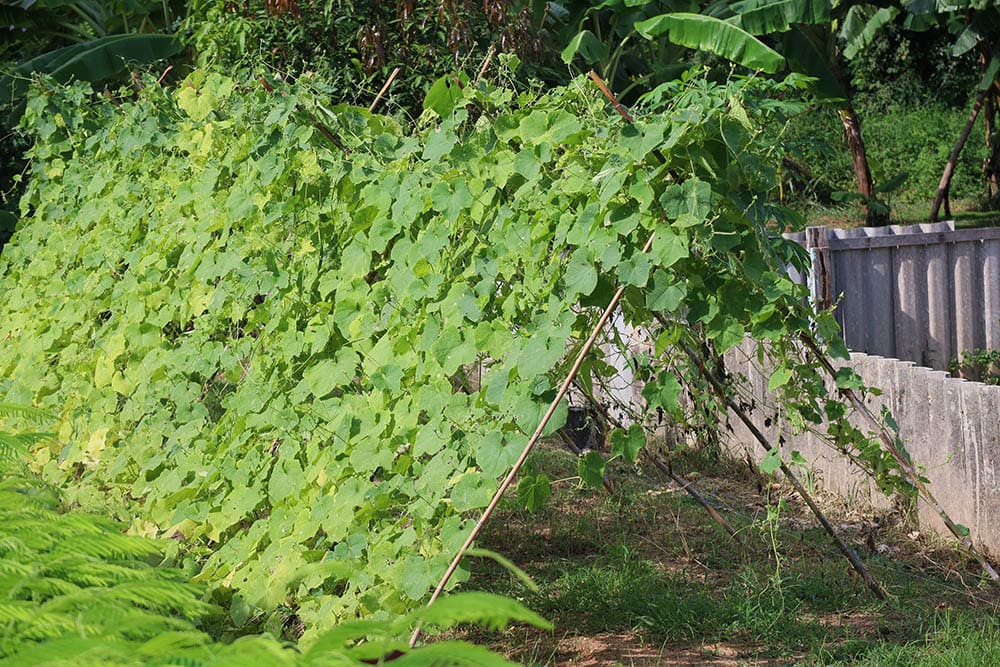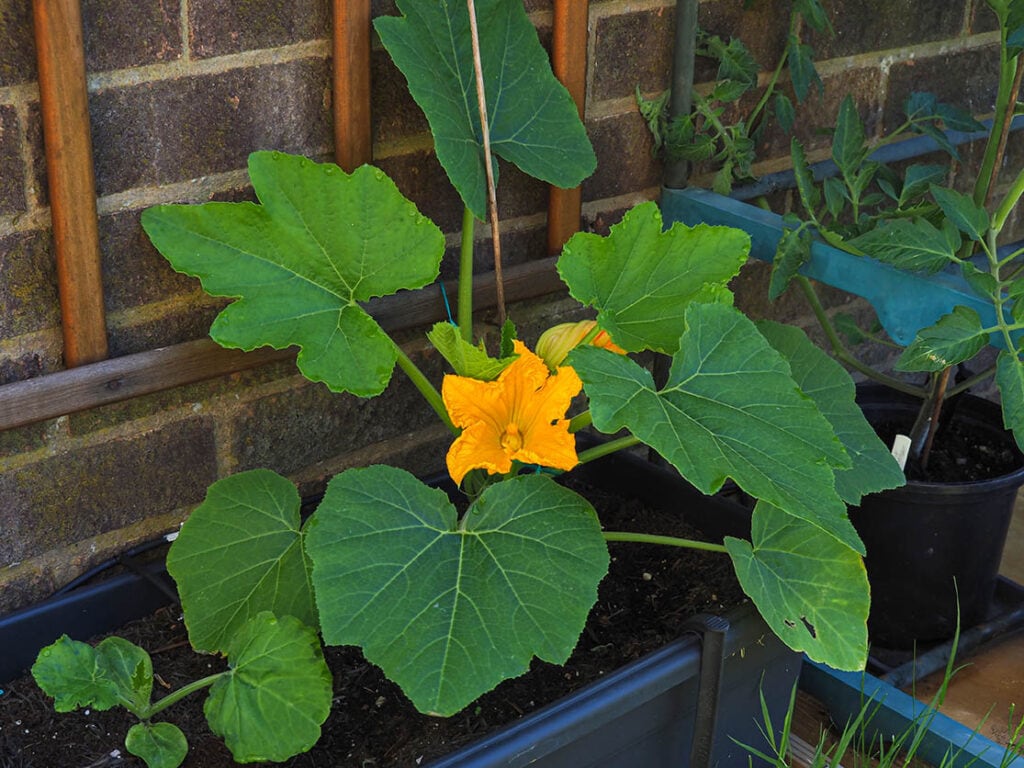How & When to Plant Zucchini: Tips & FAQ
-
Pete Ortiz
- Last updated:

Zucchini is a tasty, nutritious, and low-calorie vegetable. It is one of those ingredients that fit pretty much any recipe. The list of health benefits is quite impressive as well. However, while zucchini isn’t particularly hard to cultivate, there are some things to keep in mind before planting it. Does zucchini survive in frost?
What’s the ideal temperature for it? Should you plant it in moist soil or not? These are just some of the questions we’ll cover in this guide, along with watering, sowing, composting, and more. Join us, and let’s talk about the right time for planting zucchini and some tried-and-true techniques for ensuring steady growth!
What’s the Perfect Time for Planting Zucchini?

The most important thing to remember is that this vegetable loves a warm climate. Originally from South America and later bred in Italy, it doesn’t survive in cold temperatures. That’s exactly why you should plant zucchini in early summer. This depends on the area that you live in, of course. If you’re from Florida or Texas, summer might come a bit earlier than elsewhere in the country.
Still, before putting it into the ground, make sure there are not any traces of spring frost. Check the temperature; it should be 70–75 degrees F, with the soil at 60–65 degrees. Not sure about the first and last frost dates in your region? You can always check it on dedicated websites. This plant is a fast grower. You will see it get 1–2 inches taller every single day. On average, zucchinis take 1–2 months to mature for harvest.
| Botanical Name | Cucurbita pepo |
| Soil Type | Well-drained, organically rich, loamy |
| Soil PH | 6.5–7.5 (neutral) |
| Sun Exposure | Full sun (6–8 hours a day) |
| Watering Requirements | Moderate (2–3 times a week) |
| Temperature | 70–95º Fahrenheit |
| Hardiness Zone | 3–9 USDA |
| Days to flower | 35–55 days from planting |
The 8 Tips on How to Plant Zucchini
1. Find the Right Spot for It
Zucchini is a vine and can reach up to 10–12 feet in length. Yes, it takes up a lot of space. So, it might be a good idea to grow it on a trellis. This way, it won’t interfere with other vegetables in the garden and get more sun and air, and produce more fruit. Zucchini is a big fan of the sun and will only thrive if it gets at least 6 hours of direct sunlight during the day.
2. Start Sowing the Seeds
Once you’re 100% sure that the soil is not frosty and that the seeds will get plenty of sunlight, get to sowing. Ideally, the seeds should be planted 2–3 feet apart (this applies to a trellis as well). Making tiny holes before planting (1–2-inches deep) will cultivate growth. A single plant can produce up to ten pounds of zucchinis.
That’s why it’s so important to have a gap between the seeds. Also, if you’re not sure it won’t get cold during the night, protect the seeds using plastic jugs or row covers. Oh, and don’t forget to water them thoroughly right after planting them into the soil.

3. What About the Soil?
Well-drained and loamy soil works best for zucchini. It should also be organically rich and with a pH/acidity around 6.5–7.5. This plant isn’t very “picky” when it comes to soil and can grow in somewhat poor conditions. But if you want the perfect formula for growing it, mix 20% clay with 40% silt and sand. Composting is important as well, and we’ll talk about that next.
4. Composting for the Greater Good
Mulch is often looked down upon, but for a vegetable garden, it’s exactly what you need. Thanks to the minerals and bacteria (the good kind) that live in compost, zucchini will grow faster. The crops will be healthier, too, and stronger against pests. Don’t overdo it with the mulch, though: only add a thin layer on top of the soil and go from there.
When there’s too much compost mixed with the soil, that can lead to rot, slow growth, and other undesirable consequences.

5. Watering Comes Next
Just like all vegetables that belong to the squash family, zucchinis need to be watered regularly. During the cold early spring days, watering the plants once a week should be enough. And in summer, make sure you feed them at least 2–3 times a week. Go slow: add an inch of water and see how the soil reacts. If it’s still somewhat dry, add a bit more.
6. Are Pesticides Necessary?
Yes, this plant will greatly benefit from a healthy amount of pesticides. Again, much like squash, pumpkins, and similar veggies, zucchini is vulnerable to a long list of pests, including squash bugs, beetles, and borers that feed on the vines. If you skip this part and leave zucchini one-on-one against insects and critters, they’ll ruin your crops. Bugs can be handled with a non-invasive pesticide.
Animals, in turn, require building a fence. It doesn’t have to be an expensive fence. Just make sure it’s covering all four sides. As for diseases, powdery mildew and blossom-end rot are the ones to worry about. Luckily, both can be avoided by watering the plants regularly. If the infection has already spread, cut all the affected leaves. Also, ensure proper air circulation—that will also keep mildew away.

7. Don’t Skip On Weeding!
No matter how tough the plant is, weeding is still a must. Make it a part of your maintenance routine. Weeds only do one thing: they rob the vegetables of the nutrients and take up precious space in the garden. Furthermore, weeds are known to infect produce, as they serve as carriers for various pests, diseases, and infections. How often should you get rid of them, though?
Ideally, do that every day, right when you’re checking up on the plants. Remember: if you do this later during the day, the soil will be dry, making it harder to remove the weeds. So, the best time for weeding is early in the morning. That will only take 5–10 minutes of your time.
8. Consider Hand Pollinating
Last, but not least, let’s talk about pollinating. If there aren’t enough pollinators in your area (like bees, for example), then you’ll have to manually transfer pollen from a male zucchini flower to a female one. Otherwise, the plants will die before you see any signs of harvest. Female flowers have multiple stems, while male flowers only have one single stem and don’t produce any crops.
But they do have lots of pollen. All you have to do is add the pollen (or, rather, rub it onto) to the stigma of the female flower using a paintbrush. That’s all you have to do. Give the plant some time, and you should witness a significant boost in growth.

When Should I Harvest My Zucchini?
Wait until it reaches maturity (5–8 inches in length) and only then cut it from the vine (but leave 2–3 inches of the stem on the veggie). If you let it grow bigger, you’ll be disappointed by the taste. That’s right: immature zucchini tastes a lot better. Besides, oversized vegetables have a negative effect on their “little brothers”, as they consume most of the nutrients and water, much like weed does.
The best thing about zucchini—it can be harvested more than once during the season. So, you’ll get plenty of it. But do keep in mind that zucchinis have a rather short shelf life, especially during a hot summer. Don’t wash them before storing and keep them in the refrigerator. This way, they’ll last for 8–10 days. And if you freeze them, zucchinis will stay fresh for up to 3 months.
Conclusion
Zucchini isn’t a very “picky” plant, and that’s a big pro even for an experienced gardener. While it doesn’t tolerate cold climates, you won’t have a hard time growing it if you follow our guide closely. As long as you know when and how to plant this lovely vegetable, the tiny seeds will grow into beautiful crops in no time.
Weeding, composting, watering, and finding the right soil is just half the work. Don’t forget about pests (treat them with pesticides), diseases (a trellis should help), and the right time for harvesting (while the zucchini is relatively small). Take proper care of it and you’ll be rewarded with a healthy, delicious, and incredibly versatile ingredient for your summer meals!
- See also: How and When to Grow Pumpkins
- WebMD – Health Benefits of Zucchini
- Zucchini Plants Flowering But Not Producing Fruit
- CUCUMBER, SQUASH, MELON & OTHER CUCURBIT DISEASES
- Growing summer squash and zucchini in home gardens
- How to Grow Zucchini: 8 Tips for Growing Zucchini
- Zucchini Growing Tips I Wish I’d Known | Home Gardening: Ep. 5
- Planting, Growing, and Harvesting Zucchini & Summer Squash
- Almanac – First and Last Frost Dates
Featured Image Credit: auntmasako, Pixabay
Contents


